As the seasons change, it’s common to experience a range of cold-related symptoms that can make life uncomfortable. From congestion and sinus pressure to headaches and joint aches, there are many ways in which the body can respond to the shift in temperature and humidity. While over-the-counter medications and steam inhalers may provide some relief, natural remedies like mustard plasters have been used for centuries to soothe and calm the body.
In this article, we’ll explore 18 soothing mustard plaster recipes that use a combination of mustard, herbs, and other ingredients to provide targeted relief from cold-related symptoms. From classic yellow mustard plasters to more unique blends featuring thyme, eucalyptus, and ginger, each recipe has been carefully crafted to offer a specific set of benefits. Whether you’re looking for deep warmth, gentle application, or anti-inflammatory benefits, there’s a mustard plaster recipe here that’s sure to help you feel better.
Classic Yellow Mustard Plaster for Chest Congestion
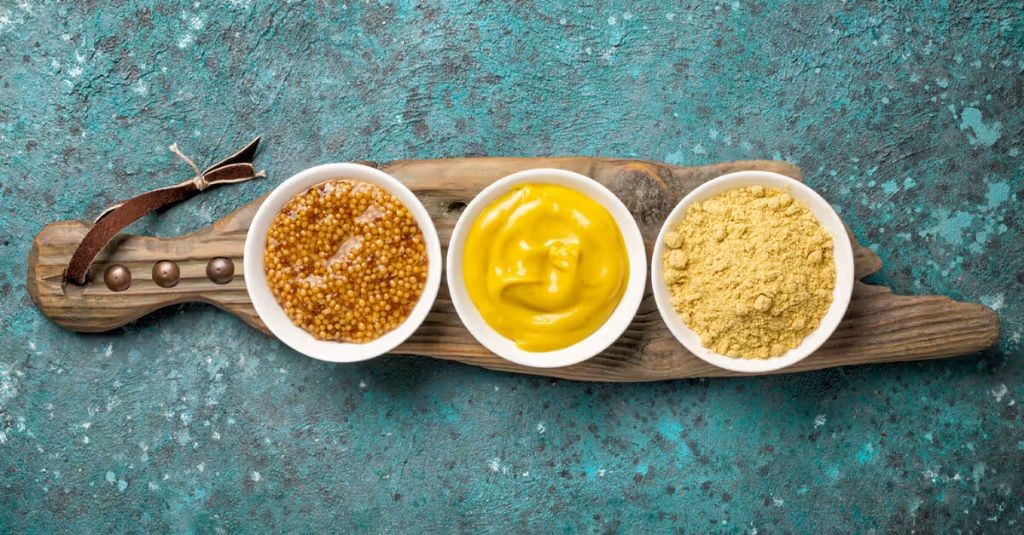
Soothe your congested chest with this simple, old-fashioned remedy.
Herbal Mustard Plaster with Thyme and Eucalyptus
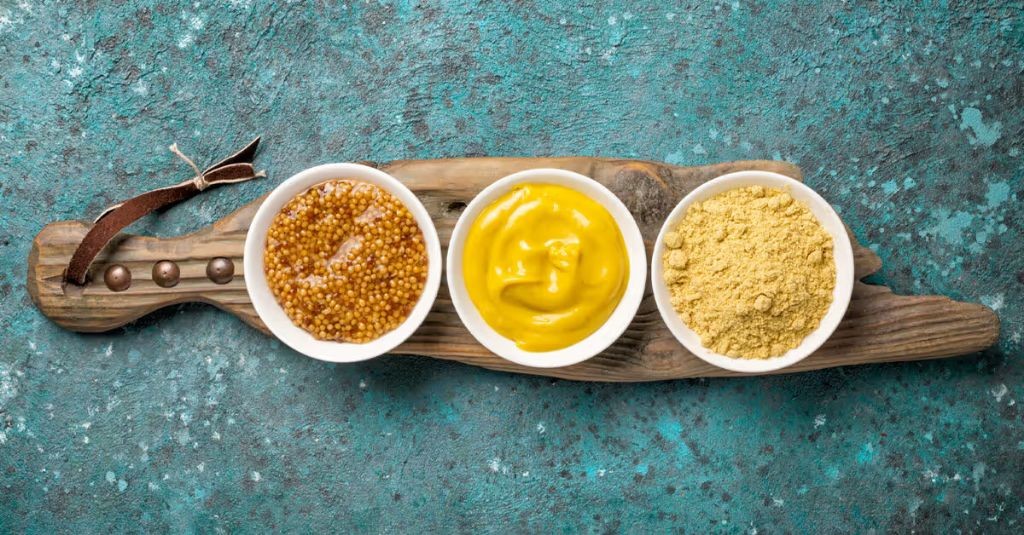
Soften and relieve muscle tension with this soothing plaster, infused with the natural properties of thyme and eucalyptus.
Ingredients:
– 2 tablespoons mustard powder
– 1 tablespoon glycerin
– 1 teaspoon dried thyme leaves
– 1/4 teaspoon dried eucalyptus leaves
– Water
Instructions:
1. In a small bowl, mix together the mustard powder and glycerin until smooth.
2. Add the dried thyme and eucalyptus leaves to the mixture and stir well.
3. Gradually add water to the mixture, stirring until a thick paste forms.
4. Apply the plaster to the affected area using a cloth or cotton ball.
Cooking Time: None (non-cooking application)
This herbal mustard plaster is ideal for soothing muscle tension, relieving minor aches and pains, and promoting relaxation. Apply as needed and reapply every 2-3 hours as desired.
Spicy Brown Mustard Plaster for Deep Warmth

Soothe your muscles with this spicy brown mustard plaster, perfect for relieving deep-seated warmth and relaxation. This natural remedy combines the antimicrobial properties of mustard with the warming effects of spices.
Ingredients:
– 2 tablespoons brown mustard
– 1 tablespoon honey
– 1/4 teaspoon ground cayenne pepper
– 1/4 teaspoon turmeric powder
– 1/2 cup warm water
Instructions:
1. In a small bowl, mix together the brown mustard and honey until smooth.
2. Add the cayenne pepper and turmeric powder to the mixture and stir well.
3. Gradually add in the warm water, stirring until you reach your desired consistency (thicker for a paste, thinner for a serum).
4. Apply the plaster to the affected area, using a gentle, circular motion to spread evenly.
5. Leave on for 15-20 minutes before rinsing off with warm water.
Cooking Time: 0 minutes (no cooking required)
Honey-Infused Mustard Plaster for Gentle Application
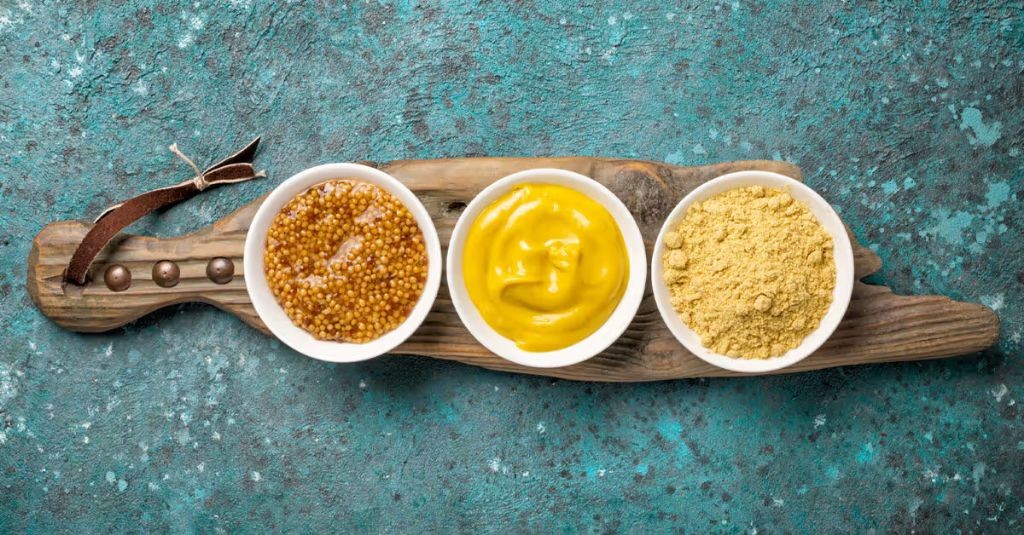
This honey-infused mustard plaster provides gentle exfoliation and hydration for dry skin. Perfect for soothing rough patches, itchiness, or flakiness.
Ingredients:
– 2 tablespoons mustard powder (preferably whole-grain)
– 1 tablespoon pure honey
– 1 tablespoon coconut oil
– 1/4 teaspoon sea salt
Instructions:
1. In a small bowl, mix together the mustard powder and honey until well combined.
2. Add the coconut oil and sea salt; stir until smooth.
3. Apply the plaster to the affected area using a gentle massaging motion.
4. Leave on for 10-15 minutes or until the mixture starts to dry slightly.
5. Rinse with warm water, pat dry, and follow up with your regular skincare routine.
Cooking Time: None! This is a topical treatment.
Lavender Mustard Plaster for Relaxation
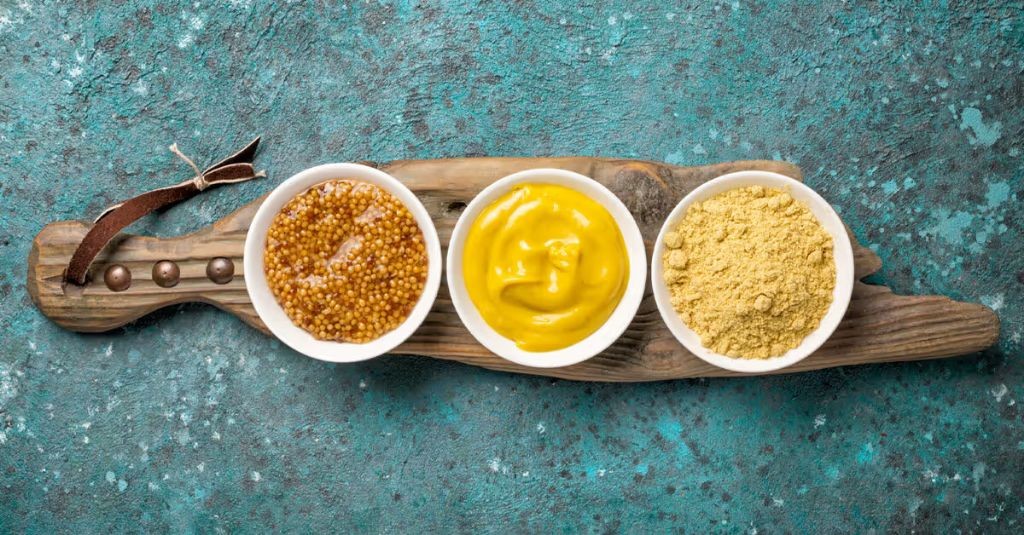
Discover the soothing benefits of this natural plaster, infused with the calming essence of lavender and the warming properties of mustard. Perfect for a relaxing bath or spa experience at home.
Ingredients:
– 2 tablespoons mustard powder
– 1 tablespoon dried lavender buds
– 1/4 cup warm water
– 2 tablespoons Epsom salt
Instructions:
1. In a small bowl, mix together the mustard powder and dried lavender buds.
2. Gradually add in the warm water, stirring until the mixture forms a smooth paste.
3. Add the Epsom salt and stir until fully incorporated.
4. Transfer the plaster to a small cloth or gauze, folding it over to create a compact shape.
5. Apply the plaster to your skin, focusing on areas that need relaxation (e.g., neck, shoulders, temples).
6. Leave the plaster on for 15-20 minutes before rinsing off with warm water.
Cooking Time: None
Ginger-Enhanced Mustard Plaster for Circulation
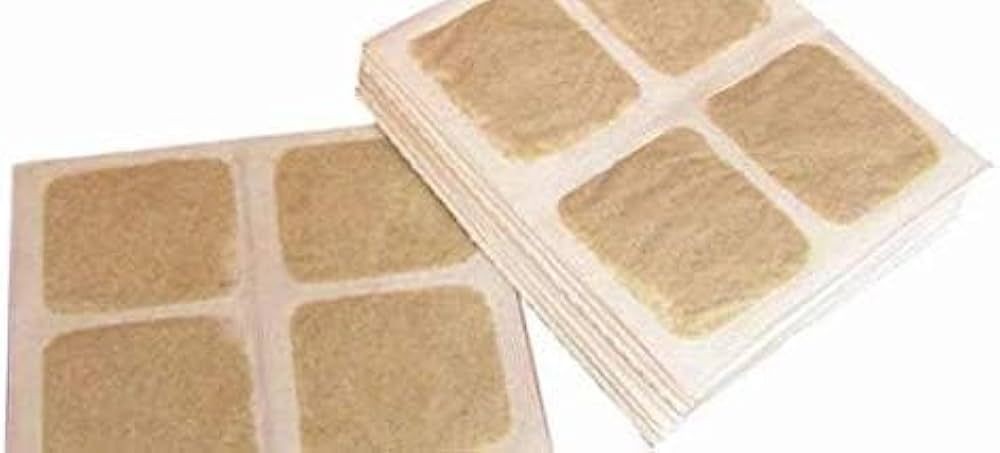
This homemade plaster recipe combines the natural benefits of ginger and mustard to improve circulation, soothe sore muscles, and ease joint pain. Perfect for post-workout relaxation or as a pre-sleep routine.
Ingredients:
– 2 tablespoons mustard powder
– 1 tablespoon grated fresh ginger
– 2 tablespoons whole wheat flour
– 1/4 teaspoon baking soda
– 1/4 cup warm water
Instructions:
1. In a small bowl, mix together the mustard powder and grated ginger until well combined.
2. Add the flour and baking soda to the mixture and stir until smooth.
3. Gradually add the warm water, stirring until a thick paste forms.
4. Apply the plaster to the desired area (arms, legs, or torso) and wrap with plastic wrap or a cloth.
Cooking Time: None! Simply apply and relax for 20-30 minutes before rinsing off with warm water.
Mustard and Flaxseed Plaster for Muscle Pain
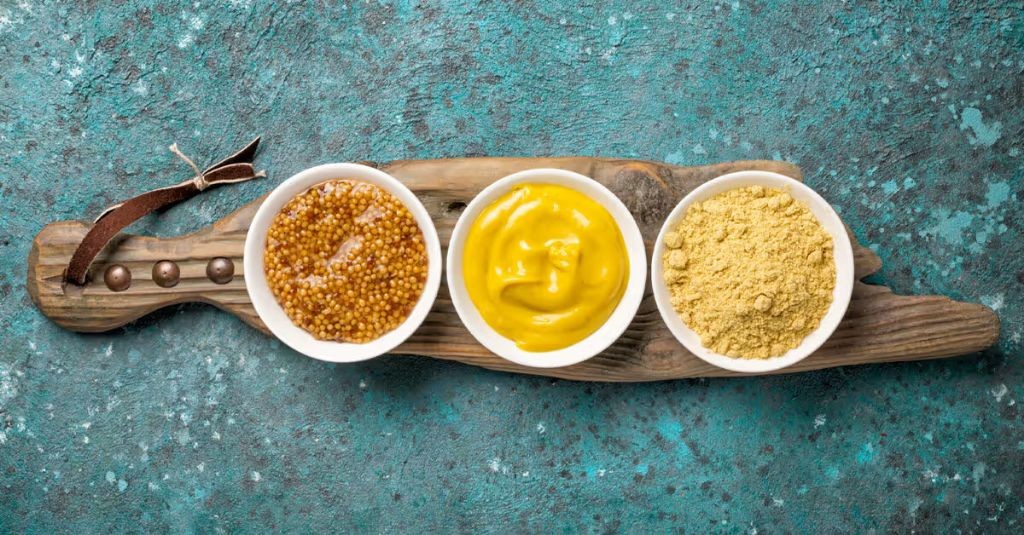
This ancient remedy combines the anti-inflammatory properties of mustard with the natural pain-relieving abilities of flaxseeds to provide soothing relief for muscle pain.
Ingredients:
– 2 tablespoons of yellow mustard
– 1 tablespoon of ground flaxseeds
– 1 cup of warm water
Instructions:
1. Mix the mustard and flaxseeds together in a small bowl.
2. Gradually add in the warm water, stirring until a smooth paste forms.
3. Apply the plaster to the affected area using a cloth or your fingers.
4. Leave it on for 15-20 minutes before rinsing off with lukewarm water.
Cooking Time: None required!
Tips:
– For best results, apply the plaster after a warm bath or shower to help loosen tight muscles.
– Repeat as needed every few hours or at night before bed.
Rosemary Mustard Plaster for Sinus Relief
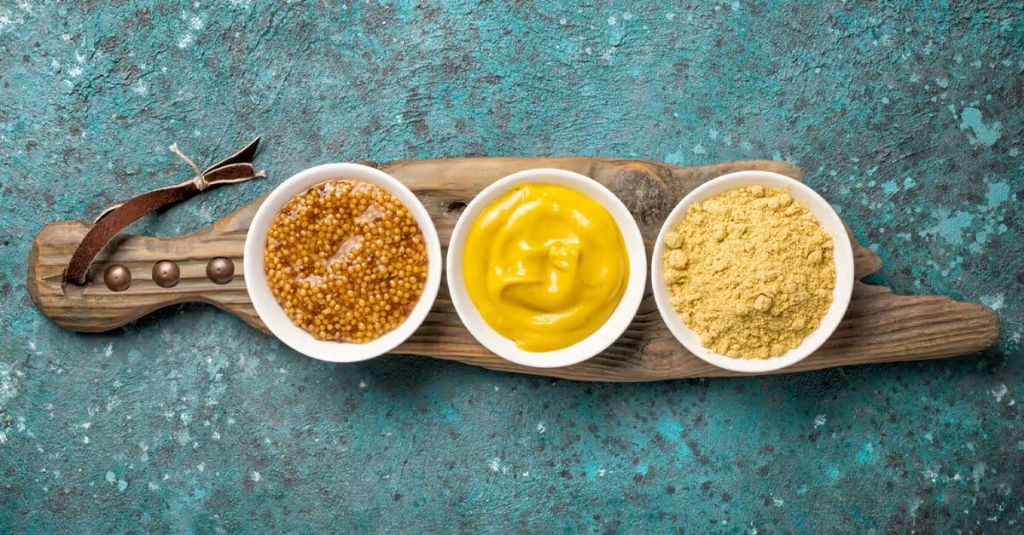
This herbal plaster combines the decongestant properties of mustard with the anti-inflammatory benefits of rosemary to provide relief from sinus congestion and pressure.
Ingredients:
– 2 tablespoons mustard powder
– 1 tablespoon dried rosemary leaves
– 1 tablespoon water
– 1 tablespoon vinegar (apple cider or white wine)
– A clean, thin cloth or gauze
Instructions:
1. In a small bowl, mix together the mustard powder and rosemary leaves until well combined.
2. Add the water and vinegar to the bowl and stir until a thick paste forms.
3. Apply the plaster to the affected sinus area using the cloth or gauze. You can apply it to the forehead, cheeks, or nose.
4. Leave the plaster on for 10-15 minutes before removing.
5. Repeat as needed, up to three times a day.
Cooking Time: None (herbal plaster)
Turmeric Mustard Plaster for Anti-Inflammatory Benefits
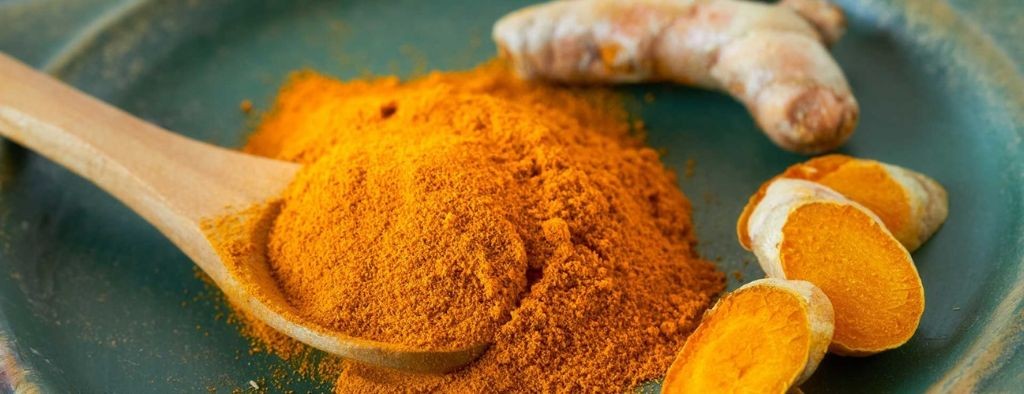
This natural plaster combines the anti-inflammatory properties of turmeric and mustard oil to provide relief from pain, inflammation, and stiffness. Perfect for post-workout recovery or as a natural remedy for sore muscles.
Ingredients:
– 2 tablespoons turmeric powder
– 1 tablespoon mustard oil
– 1/4 cup water
– 1/4 teaspoon Epsom salt (optional)
Instructions:
1. In a small bowl, mix together the turmeric powder and Epsom salt (if using).
2. Gradually add in the mustard oil and stir until a smooth paste forms.
3. Add in the water and continue stirring until the mixture thickens to your desired consistency.
4. Apply the plaster to the affected area, using a gentle massaging motion to ensure even coverage.
5. Relax for 10-15 minutes before removing the plaster with warm water.
Cooking Time: None (non-cooking recipe)
Mustard and Olive Oil Plaster for Sensitive Skin
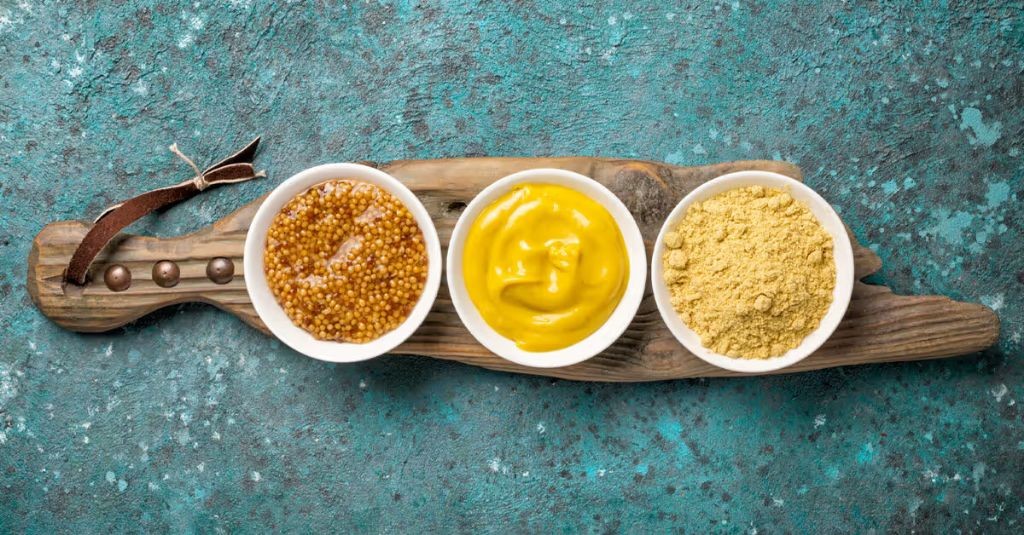
This calming plaster is designed to provide relief from dry, itchy skin. By combining the anti-inflammatory properties of mustard with the nourishing benefits of olive oil, this recipe helps to soothe and calm sensitive skin.
Ingredients:
– 2 tablespoons yellow mustard
– 1 tablespoon olive oil
– 1 tablespoon warm water
Instructions:
1. In a small bowl, mix together the yellow mustard and olive oil until well combined.
2. Add the warm water to the mixture and stir until smooth.
3. Apply the plaster to affected areas using a gentle, massaging motion.
4. Leave on for 10-15 minutes before rinsing off with lukewarm water.
Cooking Time: None
This plaster is best used as an overnight treatment or after bathing/showering. For optimal results, reapply every 2-3 days.
Peppermint Mustard Plaster for Headache Relief
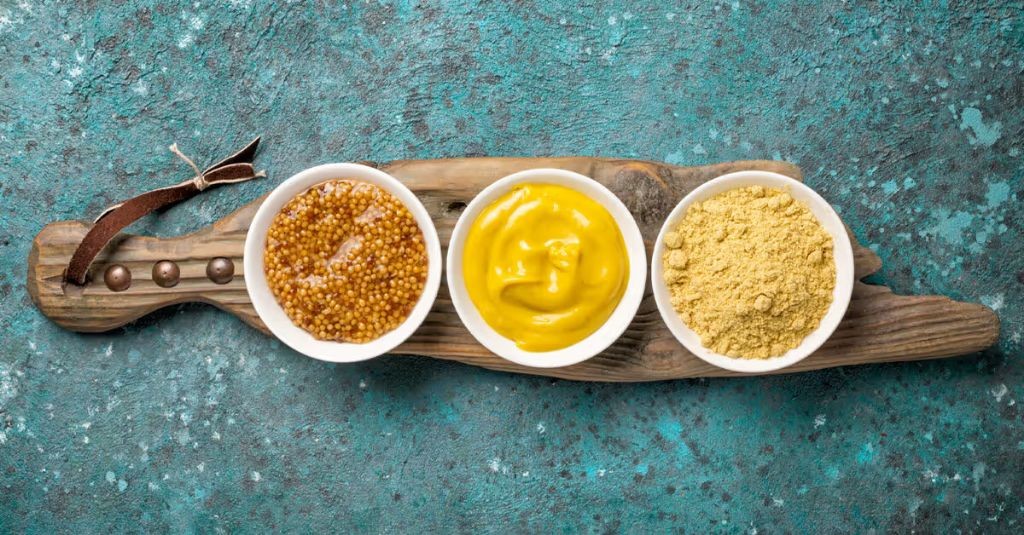
This refreshing plaster combines the cooling properties of peppermint with the soothing effects of mustard to provide relief from tension headaches.
Ingredients:
– 2 tablespoons mustard powder
– 1 tablespoon dried peppermint leaves
– 1 tablespoon glycerin
– 1/4 teaspoon water
Instructions:
1. Mix the mustard powder and dried peppermint leaves in a small bowl.
2. Add the glycerin and water to the mixture, stirring until it forms a smooth paste.
3. Apply the plaster to the affected area of your head or neck using a thin layer (about 1/8 inch).
4. Leave on for 15-20 minutes before removing and disposing of any excess plaster.
Cooking Time: None (this is not a cooking recipe)
Mustard and Apple Cider Vinegar Plaster for Detox

A simple and effective way to stimulate circulation, reduce inflammation, and promote detoxification using natural ingredients.
Ingredients:
– 2 tablespoons apple cider vinegar
– 1 tablespoon whole-grain mustard
– 1/4 cup warm water
Instructions:
1. In a small bowl, mix together the apple cider vinegar and whole-grain mustard until well combined.
2. Add the warm water to the mixture and stir until smooth.
3. Apply the plaster to the skin using a gentle circular motion, avoiding sensitive areas such as the face and neck.
4. Leave on for 15-20 minutes before rinsing off with warm water.
Cooking Time: 5 minutes
Tips:
– Use this plaster 1-2 times per week for optimal detoxification benefits.
– For added benefits, you can also add a few drops of essential oil (such as peppermint or tea tree oil) to the mixture before application.
– Be cautious when applying the plaster near open wounds or sensitive areas.
Chamomile Mustard Plaster for Calming Effects
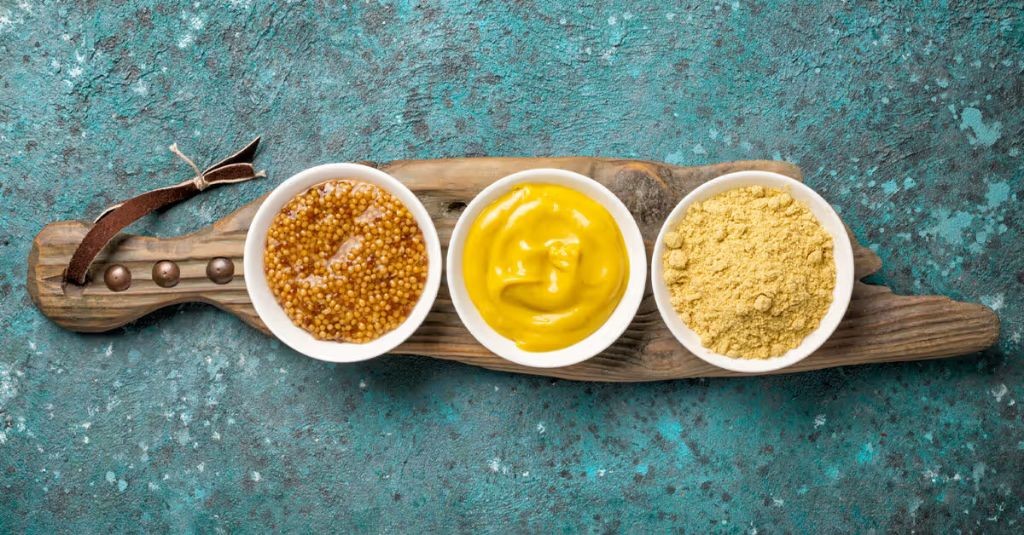
Soothe your mind and body with this natural remedy, perfect for unwinding after a long day or promoting relaxation before bed. This easy-to-make plaster combines the calming effects of chamomile with the anti-inflammatory properties of mustard.
Ingredients:
– 2 tablespoons mustard powder
– 1 tablespoon dried chamomile flowers
– 1/4 cup water
– 1 tablespoon olive oil
Instructions:
1. Mix mustard powder and chamomile flowers in a small bowl.
2. Add the mixture to the water, stirring until it forms a thick paste.
3. Apply the plaster to your skin using a cloth or directly with your fingers (avoid sensitive areas).
4. Relax for 15-20 minutes, allowing the plaster to work its calming magic.
5. Rinse off with warm water.
Cooking Time: None needed! Simply mix and apply.
Mustard and Coconut Oil Plaster for Moisturizing
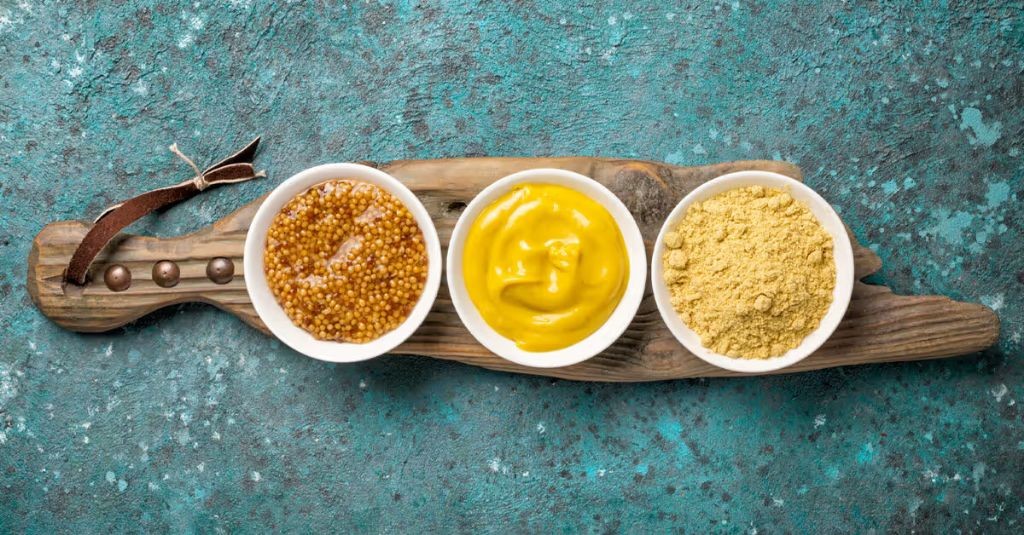
This mustard and coconut oil plaster is a natural remedy for dry, rough skin. By combining the antibacterial properties of mustard with the moisturizing benefits of coconut oil, you can create a soothing treatment to lock in moisture and promote healthy skin.
Ingredients:
– 2 tablespoons mustard powder
– 1/4 cup melted coconut oil
– 2 tablespoons warm water
Instructions:
1. In a small bowl, mix together the mustard powder and melted coconut oil until well combined.
2. Add the warm water to the mixture and stir until a thick paste forms.
3. Apply the plaster to the affected area using a thin layer or a cotton pad.
4. Leave on for 15-20 minutes before rinsing with warm water and patting dry.
Cooking Time: None required, as this is a topical treatment.
This mustard and coconut oil plaster can be used up to three times a week for optimal results. Store any leftover plaster in an airtight container at room temperature for up to five days.
Clove Mustard Plaster for Aching Joints
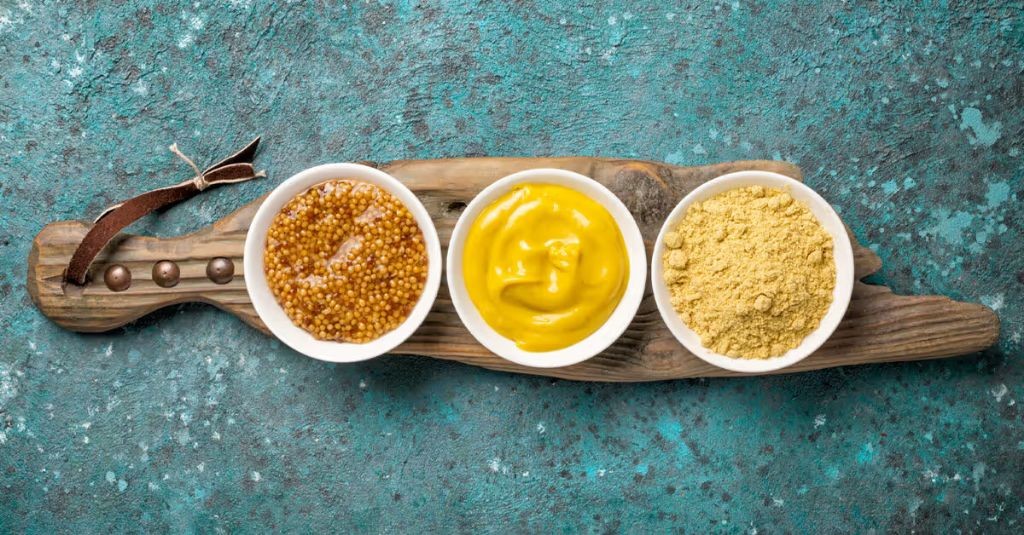
A natural remedy for soothing joint pain and inflammation, this clove mustard plaster is easy to make and apply at home. The combination of warming mustard oil, anti-inflammatory clove oil, and soothing starch provides a comforting relief for achy joints.
Ingredients:
– 2 tablespoons mustard powder
– 1 tablespoon warm water
– 5 drops clove essential oil
– 2 tablespoons cornstarch
– 2 tablespoons olive oil
Instructions:
1. In a small bowl, mix together the mustard powder and warm water until you get a smooth paste.
2. Add the clove essential oil and stir well to combine.
3. Gradually add the cornstarch, mixing until it forms a thick paste.
4. Apply the plaster to the affected area, covering 1-2 inches around the joint.
5. Cover with a cloth or bandage for 20-30 minutes to allow the warmth and ingredients to penetrate.
6. Remove the plaster and gently massage the remaining oil into the skin.
Cooking Time: None
Mustard and Beeswax Plaster for Long-Lasting Heat
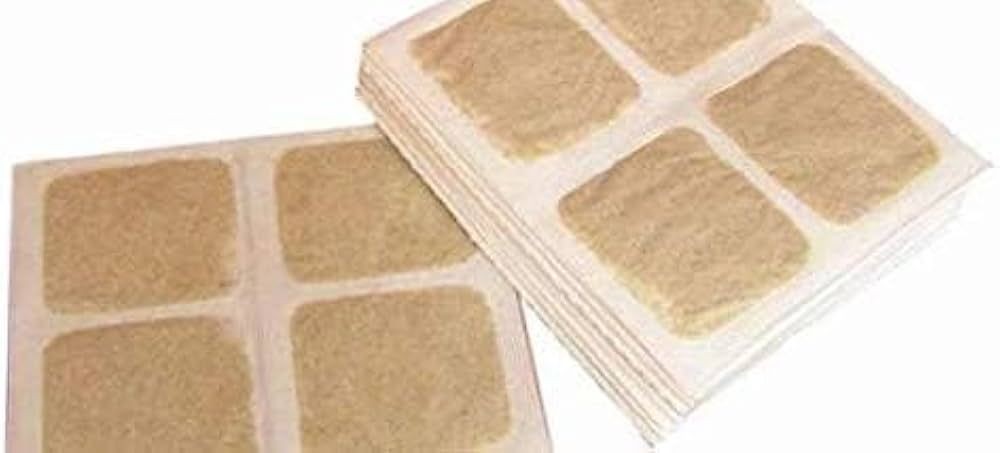
Create a natural heat insulator using mustard and beeswax to keep your home cozy during the cold months.
Ingredients:
– 1 cup powdered mustard
– 2 tablespoons beeswax pellets
– 2 cups water
Instructions:
1. In a small saucepan, mix together the powdered mustard and 1 cup of water over low heat.
2. Stir until the mixture forms a smooth paste.
3. Add the beeswax pellets to the saucepan and stir until fully melted and incorporated into the mustard mixture.
4. Remove from heat and let cool slightly.
5. Apply the plaster to your desired surface, using a putty knife or old credit card for an even coat.
Cooking Time: 10-15 minutes (depending on the thickness of the plaster)
Elderflower Mustard Plaster for Respiratory Support
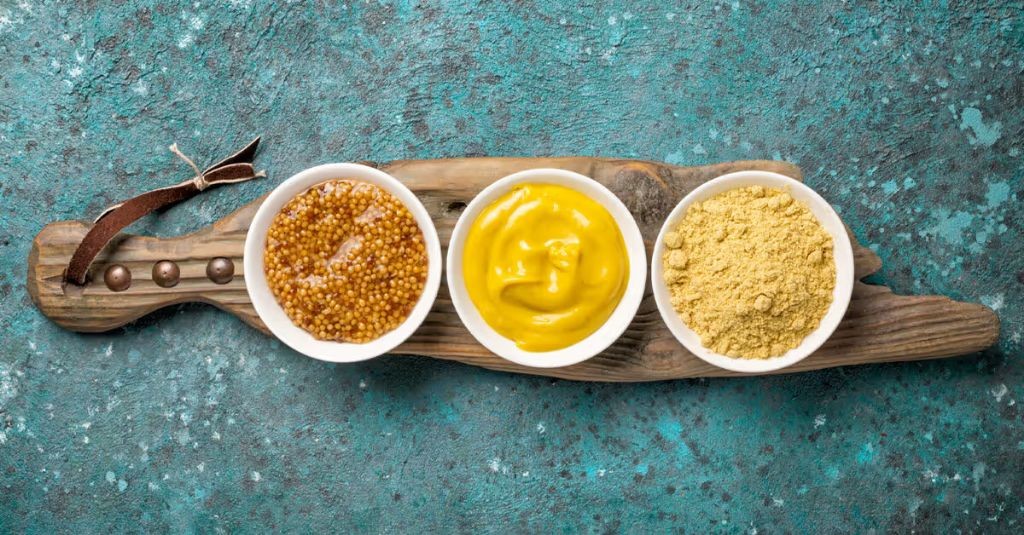
This herbal plaster combines the soothing properties of elderflower with the warming effects of mustard to provide respiratory support and relief from congestion. Perfect for cold and flu season, this natural remedy can be used as needed.
Ingredients:
– 2 tablespoons dried elderflowers
– 1 tablespoon mustard powder
– 2 tablespoons water
– 1 tablespoon olive oil
Instructions:
1. In a small bowl, combine the dried elderflowers and mustard powder.
2. Add the water and mix until the mixture forms a thick paste.
3. Gradually add the olive oil while stirring until the plaster reaches your desired consistency.
4. Apply the plaster to the chest or back, depending on where you feel congestion.
5. Leave the plaster on for 10-15 minutes before removing.
Cooking Time: None
Mustard and Aloe Vera Plaster for Soothing Irritation
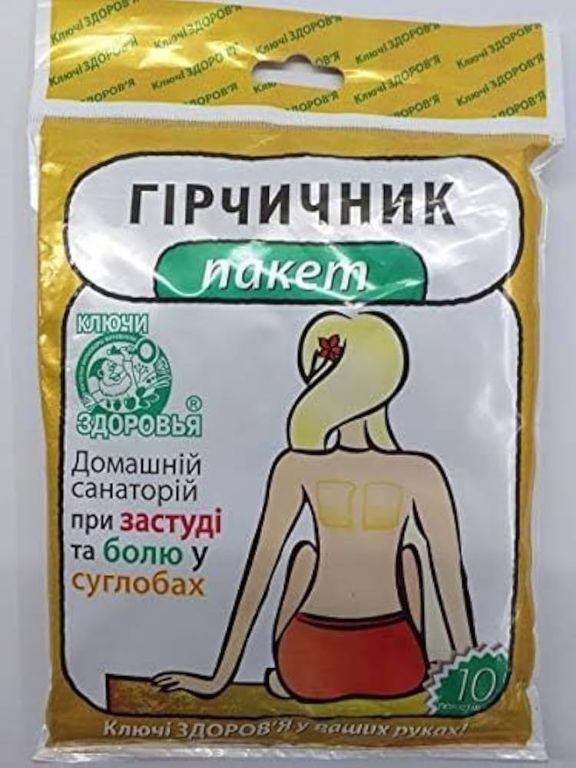
This natural plaster combines the anti-inflammatory properties of mustard powder with the soothing effects of aloe vera to provide relief from minor skin irritations, such as bug bites, sunburn, or minor cuts.
Ingredients:
– 2 tablespoons mustard powder
– 1/4 cup aloe vera gel
– 1 tablespoon water
Instructions:
1. Mix the mustard powder and water until you get a smooth paste.
2. Add the aloe vera gel to the mixture and stir well.
3. Apply the plaster evenly to the affected area, covering it completely.
4. Leave it on for 15-20 minutes before rinsing off with lukewarm water.
Cooking Time: None (non-cooking recipe)
Tips:
– For best results, apply the plaster when your skin is clean and dry.
– If you experience any discomfort or allergic reactions, discontinue use and consult a doctor.
Summary
Get relief from colds, congestion, and muscle pain with these 18 soothing mustard plaster recipes! From classic yellow mustard to herbal blends with thyme and eucalyptus, spicy brown mustard to honey-infused and lavender-enhanced options, there’s a recipe for every need. Try mustard and flaxseed for muscle pain, rosemary for sinus relief, or peppermint for headache relief. These natural remedies harness the anti-inflammatory properties of mustard to bring warmth, comfort, and relaxation. Whether you’re looking for deep warmth or gentle application, find your perfect match in this collection of recipes.




